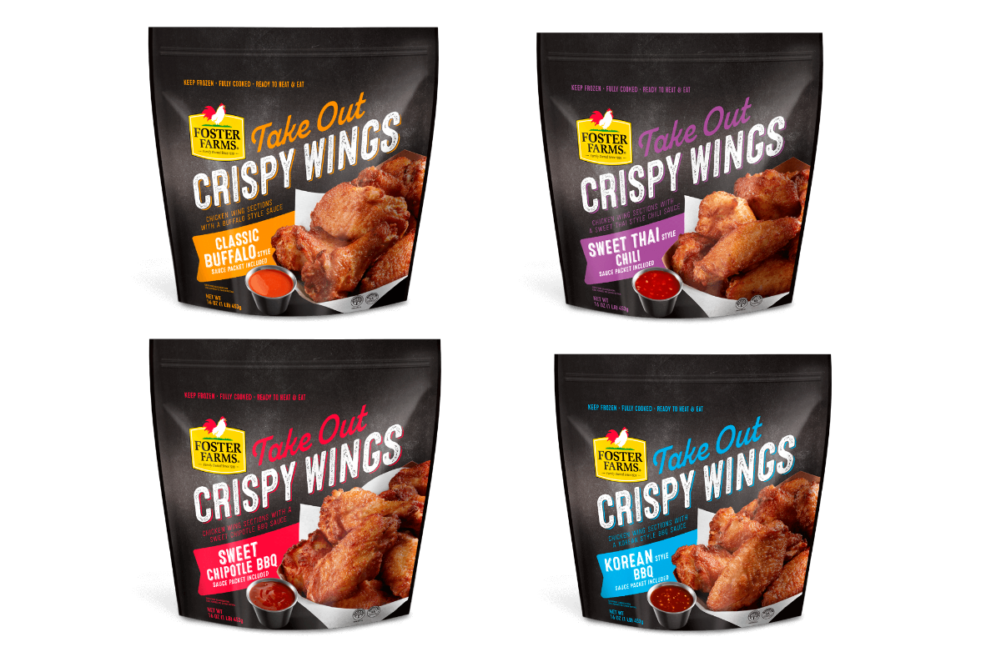Frozen foods have come a long way from the days of TV dinners and concentrated orange juice. For the past few years, better-for-you options and global recipes have made retailers’ freezers a destination for today’s shoppers. It’s become even more attractive for stock-up shopping during the COVID-19 quarantine and subsequent social distancing and safety practices.
Industry analysts expect frozen foods sales to continue to be strong as the country moves into a new norm of eating most meals at home. This is fueling the innovation of more premium products, convenience foods and concepts that mimic the restaurant experience.
“The first signs of the pandemic-induced shopping patterns started the week of March 8, 2020, followed by two of the largest panic buying weeks in the modern history of grocery retailing,” said Anne-Marie Roerink, president, 210 Analytics, San Antonio. “Fifteen weeks into the pandemic, grocery sales continue to be elevated, but the big winner week after week is frozen food.”
To date, the frozen food department has seen 14 weeks of high double-digit sales gains amid the pandemic, according to IRI, Chicago. Frozen foods generated nearly $1.3 billion in sales the week of June 14, 2020, $215 million more than the comparable week in 2019. Frozen meals lead the sector, with a third share of dollar sales, closely followed by animal protein, at 32% of total dollars.

“The meat shortages are improving, and the reopening of restaurants is slowly but surely improving foodservice sales and transactions,” Roerink said. “This may alter the demand for frozen foods in weeks to come. Thus far, retail sales have only seen a small erosion in gains but nothing that resembles normalization quite yet. Between continued economic pressure and social distancing measures, it is likely that demand for frozen foods at retail will continue to track well above 2019 levels for the foreseeable future.”
To ensure quality, formulators should address three key attributes.
- Deliver moist, succulent meat and poultry by marinating the product with a solution that binds the water. The solution may also include flavors and seasonings. Effective binders include phosphates, plant proteins and hydrocolloids, such as starches and gums.
- Prevent lipid oxidation in the protein as well as other fat-containing components, such as breadings and sauces, by including antioxidants. Selection depends on product positioning and label claims. Traditional preservatives include butylated hydroxyanisole (BHA), butylated hydroxytoluene (BHT), tertiary butylhydroquinone (TBHQ) and propyl gallate (PG). Natural ingredients with antioxidative properties include plants extracts, such as rosemary and green tea, as well tocopherols (vitamin E).
- Eliminate the chance of microbial spoilage during freeze-thaw cycles. Proper freezing preserves meat and poultry quality and ensures safety; however, there’s always the chance of temperature abuse during distribution and stocking, as well as at the home level. Traditional antimicrobials, such as propionic acid, lactate and diacetate may be used. Clean-label antimicrobials include buffered vinegar and cultured dextrose.
Companies such as Foster Farms, Livingston, Calif., now offer Take Out Crispy Wings in four varieties: Classic Buffalo, Korean BBQ, Sweet Chipotle BBQ and Sweet Thai Chili. They are intended to replicate the bar and restaurant experience, with the fully cooked wings easily prepared in the microwave or oven. The chicken sections are injected with water that is bound with a system containing modified food starch, rice flour and sodium phosphates. The sauces include ingredients to prevent freezer burn and lipid oxidation.
Park City, Utah-based Jafflz, is entering the marketplace with a healthful spin on stuffed hand-held sandwiches. Created by South African-native Chef Meryl van der Merwe, a number of the all-natural single-serve toasted pockets include meat or poultry. The Sloppy Joe variety uses only 100% local grass-fed beef that is blended with soy flour and seasoning. Other meaty options include Ham, Egg & Cheese and Chicken Enchiladas. The pocket component includes natural dough conditioners to ensure quality texture from freezer to hand.
Caulipower, Los Angeles, is expanding its frozen cauliflower crust pizza with a Buffalo-Style Chicken variety. It’s made with fully cooked all-natural white meat chicken injected with a solution of water, salt, tapioca starch, rice starch, oat fiber, chicken stock, rosemary extract and sugar.


